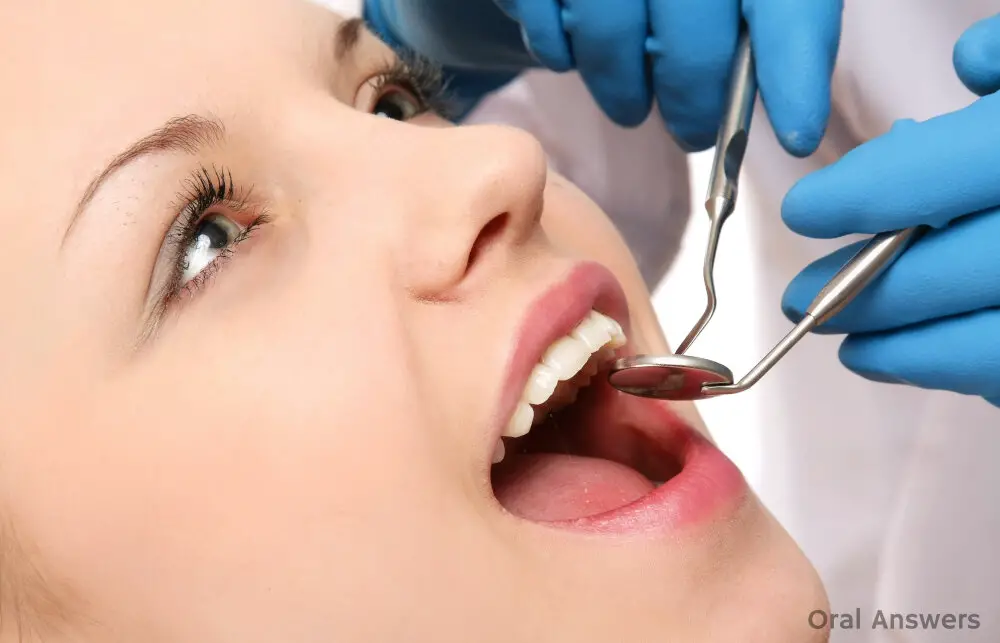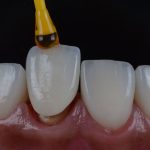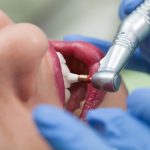Understanding Wisdom Teeth Removal: Which Anesthesia Type is Best?

Wisdom teeth removal is a common dental procedure that many people undergo in their late teens or early twenties. Wisdom teeth, also known as third molars, are the last set of teeth to erupt in the mouth. However, due to their location at the back of the mouth, they often cause discomfort, pain, and even infection, leading to the need for their removal. Although wisdom teeth removal is a routine procedure, it can still be daunting for many patients. One of the primary concerns that patients have is which anesthesia type is best for them. The choice of anesthesia can significantly affect the patient’s comfort level during the procedure and their recovery period. In this article, we will explore the different anesthesia types used for wisdom teeth removal and which one is best suited for you. The three primary anesthesia types used in wisdom teeth removal are local anesthesia, nitrous oxide sedation, and general anesthesia. Local anesthesia involves numbing only the affected area, while nitrous oxide sedation involves inhaling a gas that induces relaxation and reduces pain perception. General anesthesia involves complete unconsciousness, and it is typically used for complex or multiple wisdom teeth removal procedures. Each anesthesia type has its benefits and drawbacks, and the choice of anesthesia depends on various factors, such as the patient’s age, medical history, anxiety level, and the complexity of the procedure. Therefore, it is essential to consult with your dentist or oral surgeon to determine which anesthesia type is best suited for your individual needs.
Wisdom teeth, also known as third molars, are the last set of teeth to appear in the back of the mouth, usually between the ages of 17 and 25. These teeth were essential in the past when humans’ diets consisted of tough foods that required more grinding power. However, with modern advancements in diet and dental care, they have become obsolete. In fact, for most people, wisdom teeth cause more harm than good. They can push against other teeth, causing pain and misalignment or become impacted, which can lead to infections and other complications. As a result, many people opt to have their wisdom teeth removed through a surgical procedure.
Wisdom teeth, also known as third molars, are the last set of teeth to develop in the mouth. While they can be beneficial in some cases, often they can become problematic and cause a number of dental issues. For example, if there is not enough space in the mouth for the wisdom teeth to emerge properly, they can become impacted, leading to pain, infection, and damage to surrounding teeth and gums. In addition, wisdom teeth are difficult to clean, which can increase the risk of decay and gum disease. Due to these potential complications, many dentists recommend removing wisdom teeth before they cause problems. Removing wisdom teeth typically involves anesthesia to ensure a pain-free procedure, and the type of anesthesia used will depend on the complexity of the case and the patient’s individual needs.
Types of Anesthesia

When it comes to wisdom teeth removal, there are three types of anesthesia that can be used. The first one is local anesthesia, which is administered through an injection in the mouth. This type of anesthesia numbs only the area around the wisdom teeth and the patient remains awake during the entire procedure. Local anesthesia is often used for simple wisdom teeth extractions that do not involve complex surgical procedures. Patients typically recover quickly from this type of anesthesia and can return to their daily activities immediately. The second type of anesthesia is nitrous oxide, more commonly known as laughing gas. This is a type of conscious sedation where patients inhale a combination of nitrous oxide and oxygen through a mask placed over their nose. Laughing gas can help patients feel relaxed and comfortable during the wisdom teeth removal procedure. It is often used for patients who experience dental anxiety or fear of the procedure. However, patients should be aware that while they will remain conscious, they may not remember the details of the procedure due to the sedative effects of the gas.
Local anesthesia is a type of anesthesia that numbs a specific area of the body, typically the mouth and gums in the case of wisdom teeth removal. It is administered through an injection and works by blocking the nerves that transmit pain signals to the brain. Local anesthesia allows the patient to remain conscious during the procedure while eliminating any discomfort or pain. The effects of local anesthesia are temporary and typically wear off within a few hours. This type of anesthesia is generally considered safe and is commonly used for minor dental procedures such as fillings and extractions. However, it is important to discuss any concerns or medical history with your dentist or oral surgeon before undergoing any dental procedure.
Nitrous oxide, also known as laughing gas, is a colorless and odorless gas that is commonly used as a mild sedative during dental procedures. It is inhaled through a mask and works quickly to induce a feeling of relaxation and euphoria. Nitrous oxide is considered safe and effective for most patients, and its effects wear off quickly once the mask is removed. Some patients may experience mild side effects such as nausea or dizziness, but these typically subside quickly. Nitrous oxide is often used in combination with local anesthesia to provide a comfortable and pain-free experience during wisdom teeth removal.
IV sedation, also known as intravenous sedation, is a type of anesthesia used during wisdom teeth removal procedures. This type of anesthesia involves the administration of medication through a vein in your arm, which produces a state of deep relaxation and sleepiness. IV sedation is different from general anesthesia, as you will still be able to breathe on your own and respond to verbal commands. However, you will likely have little to no memory of the procedure and will feel little to no pain. IV sedation is a safe and effective option for patients who are anxious or apprehensive about their wisdom teeth removal, and can help ensure a comfortable and stress-free experience.
General anesthesia is a medical technique that induces a temporary state of unconsciousness in a patient, allowing them to undergo painful or invasive procedures without feeling any pain or discomfort. This type of anesthesia is typically administered through an IV injection or inhalation, and it works by altering the patient’s brain activity, suppressing their ability to respond to external stimuli. General anesthesia is commonly used for wisdom teeth removal procedures, as it allows dental surgeons to perform the surgery quickly and efficiently, while ensuring that the patient remains comfortable and pain-free throughout the process. However, general anesthesia carries certain risks, including nausea, vomiting, and breathing difficulties, which is why it is important to discuss its potential benefits and drawbacks with your dentist before undergoing any dental procedure.
Factors to Consider

When considering wisdom teeth removal, there are several factors that you should take into account. First and foremost, you should consider the complexity of your procedure. If your wisdom teeth are impacted, which means that they are stuck beneath your gums and cannot emerge properly, you may require a more complex surgery. In this case, you may benefit from general anesthesia, which will put you to sleep for the duration of the procedure. On the other hand, if your wisdom teeth are fully erupted and can be easily extracted, local anesthesia may be sufficient to numb the area and provide pain relief. Another factor to consider is your personal comfort level. If you have anxiety or fear around dental procedures, you may prefer to be completely asleep under general anesthesia. This can help you to avoid any discomfort or anxiety during the procedure. Alternatively, if you feel comfortable being awake and alert during the procedure, or if you have medical conditions that limit your ability to receive general anesthesia, local anesthesia may be a better option for you. Ultimately, the decision of which anesthesia type is best for you will depend on your individual circumstances, so it is important to discuss your options with your dental provider.
The age of the patient is an important factor to consider when deciding which anesthesia type is best for wisdom teeth removal. Younger patients typically have a faster metabolism and may require a higher dose of anesthesia to achieve the desired level of sedation. Additionally, older patients may have underlying health conditions that can affect the choice of anesthesia type. For example, patients with cardiovascular disease may be at higher risk for complications with general anesthesia. Overall, the age of the patient should be carefully evaluated when selecting the anesthesia type for wisdom teeth removal to ensure safe and effective treatment.
The overall health of a patient plays a crucial role in determining the anesthesia type that is best for wisdom teeth removal. Factors such as age, weight, medical history, and medication use are taken into consideration when selecting the appropriate anesthesia type. Patients with underlying health conditions may require special attention and monitoring during the procedure to ensure a safe and successful outcome. Before undergoing wisdom teeth removal, it is important for patients to disclose any medical conditions and medications they are taking to their dentist or oral surgeon. This will help to determine the most suitable anesthesia type and ensure the patient’s overall health and safety.
The complexity of the wisdom teeth removal procedure depends on various factors, such as the position, size, and shape of the teeth, as well as the patient’s age and overall oral health. In some cases, the teeth may be fully impacted, meaning they have not erupted through the gum line, while in other cases, they may have partially erupted and be at risk of infection or decay. Additionally, the procedure may involve the extraction of multiple teeth, which can further increase the complexity. To ensure a safe and successful procedure, it is crucial to choose the right anesthesia type and to work with an experienced oral surgeon who can identify and address any potential complications.
Patient anxiety levels can play a significant role in the success of wisdom teeth removal procedures. It is common for patients to feel anxious or nervous before undergoing any kind of medical procedure, and this can be particularly true for oral surgeries. Dental anxiety can cause physical symptoms such as high blood pressure, rapid heart rate, and difficulty breathing, which can impact the safety and efficacy of the anesthesia used during the procedure. It is important for dentists and oral surgeons to be aware of their patients’ anxiety levels and take steps to manage them appropriately, such as through the use of calming techniques, preoperative counseling, or sedation options. By addressing patient anxiety, dental professionals can help ensure a smoother, safer, and more comfortable wisdom teeth removal experience for their patients.
Benefits and Risks

Wisdom teeth removal is a common dental procedure that involves the extraction of the third molars at the back of the mouth. While the procedure may seem daunting, there are several benefits to having your wisdom teeth removed. Firstly, extracting your wisdom teeth can prevent overcrowding in the mouth, which can cause pain, discomfort, and misalignment of the remaining teeth. Removing your wisdom teeth can also prevent the development of gum disease, decay, and other oral health issues that can arise from the difficult-to-reach location of these molars. Additionally, extracting your wisdom teeth can improve your overall dental hygiene, making it easier to brush and floss effectively and thereby reducing the risk of cavities and other dental problems. However, like any surgical procedure, there are risks associated with wisdom teeth removal. The most common risks include infection, bleeding, and nerve damage. Infection can occur if bacteria enter the surgical site, which can cause swelling, pain, and fever. Bleeding is also a potential risk, as the surgical site will naturally bleed after the extraction. This bleeding should subside within a few hours, but excessive bleeding may require additional medical attention. Nerve damage is another potential risk of wisdom teeth removal, which can cause numbness or tingling in the mouth, tongue, or face. While these risks are relatively rare, it’s important to discuss them with your dentist or oral surgeon before undergoing the procedure.
Local anesthesia is a popular choice for wisdom teeth removal because it provides several benefits. One of the main advantages is that it only numbs the area being operated on, leaving the patient fully conscious and able to communicate with the oral surgeon. This reduces the risks associated with general anesthesia, such as nausea or respiratory problems. Additionally, local anesthesia works quickly, and the effects wear off relatively quickly after the procedure, allowing patients to resume their normal activities within a few hours. Moreover, local anesthesia is generally less expensive than other types of anesthesia, making it a more affordable option for patients who do not have insurance coverage or who have limited financial resources. Overall, local anesthesia is a safe, effective, and convenient choice for wisdom teeth removal, particularly for patients who prefer to avoid the risks and side effects associated with other types of anesthesia.
Local anesthesia is a commonly used method for wisdom teeth removal, which involves numbing only the specific area where the tooth is being extracted. While it is considered a safe and effective option, like any medical procedure, there are potential risks. Some of the risks associated with local anesthesia include allergic reactions, nerve damage, and infection. Allergic reactions to the anesthesia can cause symptoms such as swelling, difficulty breathing, and a drop in blood pressure. Nerve damage can occur if the anesthesia is injected too close to a nerve, causing numbness or tingling in the face, tongue, or lips. Infection can develop if the injection site is not properly sterilized, leading to swelling, pain, and fever. It is important to discuss any concerns or medical history with your dentist or oral surgeon before the procedure to ensure the safest and most appropriate anesthesia option is chosen.
Nitrous oxide, commonly known as laughing gas, is a popular anesthesia option for wisdom teeth removal due to its numerous benefits. This gas is quick to take effect and wears off rapidly, allowing patients to return to their normal activities soon after the procedure. Nitrous oxide also has a calming effect, making patients feel more relaxed and comfortable during the procedure. It has few side effects and is considered safe for most patients. Additionally, it is a versatile anesthesia option that can be adjusted to individual needs, making it an ideal choice for patients with anxiety or fear of dental procedures. Overall, nitrous oxide is a safe and effective option for wisdom teeth removal that can make the procedure less stressful and more comfortable for patients.
Nitrous oxide, also known as laughing gas, is a common anesthesia option for wisdom teeth removal. However, it comes with risks that patients should be aware of. While it is generally considered safe, nitrous oxide can cause dizziness, nausea, and headaches. In rare cases, it can also lead to more serious side effects such as hallucinations, seizures, or respiratory depression. Patients with certain medical conditions, such as lung disease or a history of substance abuse, may be at higher risk for complications. It is important for patients to discuss their medical history with their dentist or oral surgeon and to follow all pre- and post-operative instructions carefully to minimize the risks associated with nitrous oxide.
IV sedation, also known as intravenous sedation, is a form of anesthesia that is administered through a vein. It is commonly used for dental procedures such as wisdom teeth removal. One of the main benefits of IV sedation is that it induces a state of deep relaxation and creates a sense of detachment from the procedure. This can be particularly beneficial for patients who experience anxiety or fear when undergoing dental treatment. IV sedation also allows the dentist to perform the procedure more efficiently and with greater precision, as the patient is completely relaxed and still. Additionally, IV sedation has a quick onset and can be adjusted throughout the procedure, ensuring the patient is comfortable and pain-free. Overall, IV sedation can make wisdom teeth removal a more comfortable and stress-free experience for patients.
IV sedation is a commonly used anesthesia type during wisdom teeth removal procedures. While it can provide a comfortable and pain-free experience for patients, it also comes with certain risks. One of the most significant risks of IV sedation is respiratory depression, where breathing becomes too slow or shallow, leading to a decrease in oxygen levels in the body. This can be especially dangerous for patients with pre-existing respiratory conditions or who are overweight. Additionally, IV sedation can cause a drop in blood pressure, which can lead to dizziness and fainting. Patients should be closely monitored during and after the procedure to ensure their safety and to detect any potential complications early on.
General anesthesia is a highly effective method for numbing pain and relaxing patients during surgical procedures such as wisdom teeth removal. One of the main benefits of general anesthesia is that it induces a deep sleep, so patients are unconscious during the procedure and feel no pain or discomfort. This can lead to a more efficient and less stressful experience for both the patient and the dental team. Additionally, general anesthesia can provide a better quality of anesthesia as it can be tailored to each patient’s individual needs and can be adjusted as necessary during the procedure. Moreover, the use of general anesthesia can help reduce anxiety and fear associated with the dental procedure, allowing patients to undergo treatment with more confidence and ease.
General anesthesia is a powerful sedative that is used to put the patient into a deep sleep, so they don’t feel any pain or discomfort during surgery. However, like any medical procedure, general anesthesia carries some risks. Some common side effects of general anesthesia include nausea, vomiting, sore throat, and dizziness. In rare cases, general anesthesia can cause more serious complications such as allergic reactions, heart attack, stroke, or even death. Patients with pre-existing medical conditions such as heart disease, lung disease, or diabetes are at a higher risk for complications during general anesthesia. Therefore, it is crucial to discuss the risks and benefits of general anesthesia with your dentist or oral surgeon before undergoing wisdom teeth removal surgery.
Choosing the Right Type of Anesthesia

When it comes to wisdom teeth removal, choosing the right type of anesthesia can make all the difference in how comfortable the patient feels during the procedure. There are several options available, including local anesthesia, nitrous oxide sedation, intravenous (IV) sedation, and general anesthesia. Local anesthesia involves numbing only the immediate area around the tooth or teeth to be removed, and is usually used in conjunction with other forms of sedation. Nitrous oxide sedation, also known as laughing gas, is a mild form of sedation that helps patients relax and feel less anxious about the procedure. IV sedation is a deeper form of sedation that can put patients into a state of conscious sedation, meaning they are awake but very relaxed. Finally, general anesthesia involves putting the patient into a deep sleep, and is typically reserved for more complex procedures or patients with medical conditions that make other forms of sedation risky. When deciding which type of anesthesia to use for wisdom teeth removal, there are several factors to consider. The complexity of the procedure, the patient’s medical history, and the patient’s level of anxiety are all important considerations. Patients who are particularly anxious or who have a strong gag reflex may benefit from deeper forms of sedation, while those who are generally healthy and have a lower level of anxiety may do well with local anesthesia or nitrous oxide sedation. Ultimately, the choice of anesthesia will depend on the individual patient’s needs and preferences, as well as the recommendations of the oral surgeon performing the procedure.
When it comes to deciding which anesthesia type is best for wisdom teeth removal, there are several factors to consider. One of the most important factors is the patient’s level of anxiety and pain tolerance. For those who are extremely anxious or have a low pain tolerance, a general anesthesia may be the best option as it will result in complete sedation and no memory of the procedure. However, for those who are comfortable with local anesthesia, it may be the preferred choice as it is less invasive and has fewer side effects. Ultimately, the decision should be made in consultation with a qualified oral surgeon who can provide guidance based on the patient’s individual needs and medical history.
When considering wisdom teeth removal, there are several factors that should be weighed to determine the best anesthesia type for the procedure. Firstly, the complexity of the extraction and the patient’s pain threshold should be considered. Secondly, the patient’s medical history and any medications they are taking should be taken into account. Additionally, the patient’s level of anxiety or fear should be considered as some types of anesthesia may be more suitable for those who experience dental anxiety. It is important to discuss these factors with a qualified dental professional, who can help determine the most appropriate anesthesia type for the individual patient.
When it comes to wisdom teeth removal, a doctor’s recommendation is crucial in determining which anesthesia type is best for the patient. In most cases, the dentist or oral surgeon will prefer to use general anesthesia, which puts the patient to sleep during the procedure. This is especially true if the patient has a particularly difficult case, such as impacted wisdom teeth or other complications. However, in some cases, local anesthesia may be sufficient, especially if only one or two teeth need to be removed. In any case, it is important for the patient to follow the doctor’s recommendations in order to ensure a safe and successful procedure.
Anesthesia is a critical component of wisdom teeth removal surgery, as it helps to minimize pain and discomfort during the procedure. There are several types of anesthesia used during wisdom teeth removal surgery, including local anesthesia, nitrous oxide, sedation anesthesia, and general anesthesia. Local anesthesia is administered through an injection and numbs the specific area where the wisdom teeth will be removed. Nitrous oxide, also known as laughing gas, is inhaled through a mask and provides a relaxed and pain-free experience. Sedation anesthesia is a type of anesthesia that induces a state of relaxation and calmness, and may be administered orally or intravenously. Finally, general anesthesia is a type of anesthesia that causes complete unconsciousness and is typically reserved for more complicated wisdom teeth removal surgeries. The type of anesthesia chosen by the dentist or oral surgeon will depend on the patient’s individual needs and the complexity of the procedure.
If you are planning to undergo wisdom teeth removal surgery, it is imperative to discuss with your dentist or oral surgeon about the anesthesia type that is best for you. The decision on which anesthesia to use depends on various factors like your overall health, anxiety level, complexity of the surgery, and the number of teeth to be removed. Your doctor can guide you through the pros and cons of each anesthesia type, including local anesthesia, sedation anesthesia, and general anesthesia. Based on your unique situation, they can recommend the most appropriate anesthesia type that can ensure a safe and comfortable procedure. Taking the time to discuss this with your doctor can help you make an informed decision and alleviate any concerns or fears you may have about wisdom teeth removal surgery.
When it comes to wisdom teeth removal, it’s important to understand all the options available, including the type of anesthesia that will be used. Patients should take the time to research and discuss with their dentist which type of anesthesia is best suited for their individual needs and comfort level. Being well-informed and comfortable with the decision will not only alleviate any anxiety or fear, but also ensure a smoother and more successful procedure overall. It’s crucial to prioritize one’s own health and well-being by making informed decisions and asking questions. Therefore, taking the time to understand the anesthesia options available is an essential step in the wisdom teeth removal process.
Conclusion

In conclusion, wisdom teeth removal is a common dental procedure that requires anesthesia to ensure patients’ comfort and safety. The best anesthesia type depends on various factors, such as the complexity of the surgery, patient preference, and medical history. Local anesthesia is a popular option for simple wisdom teeth extractions, while general anesthesia is more suitable for complex procedures. Sedation anesthesia offers a middle ground between the two, providing relaxation and pain relief without inducing unconsciousness. Ultimately, the choice of anesthesia type should be made in consultation with a qualified dental professional, who can assess the individual’s needs and recommend the most appropriate option. With proper anesthesia and post-operative care, wisdom teeth removal can be a straightforward and painless experience, with minimal risk of complications.






